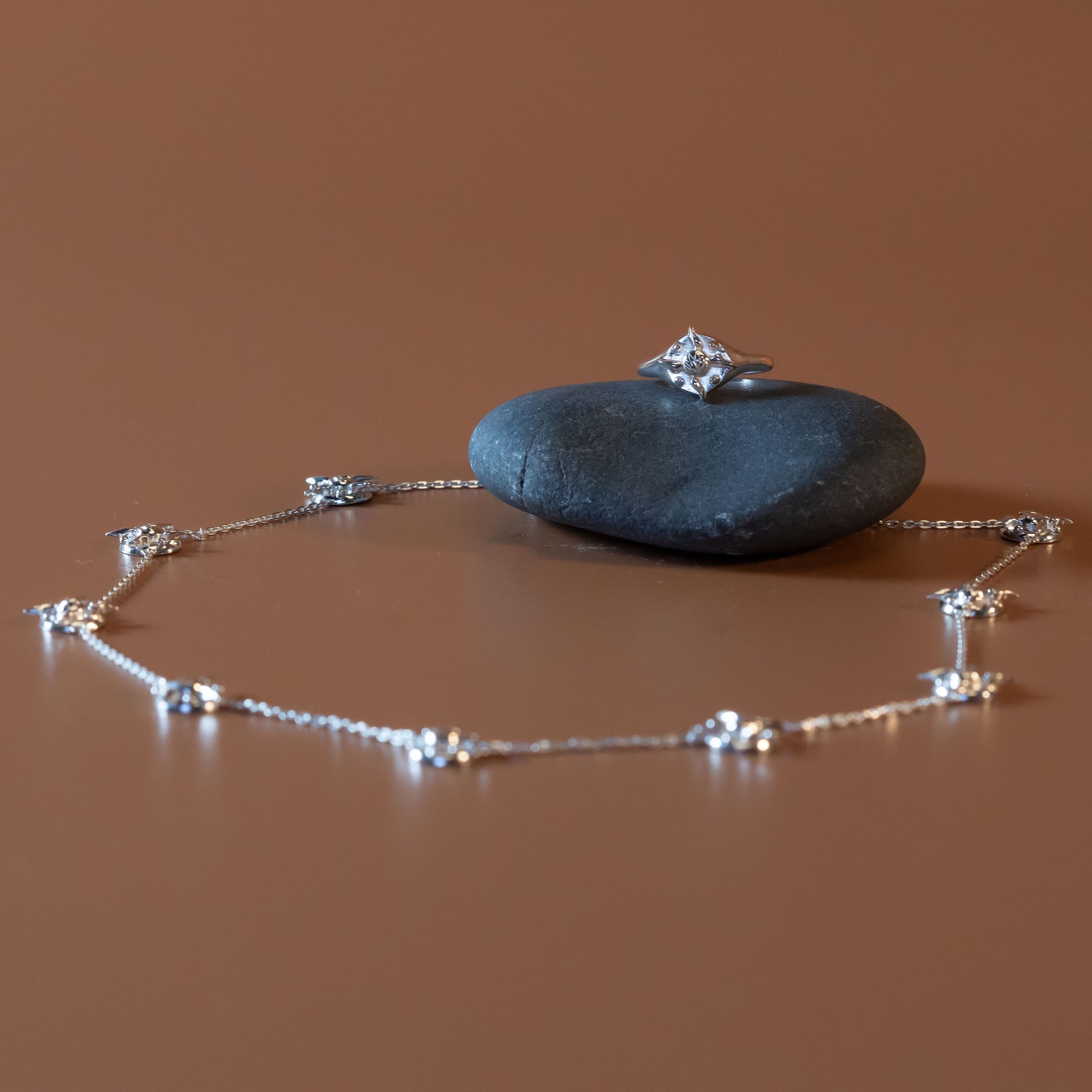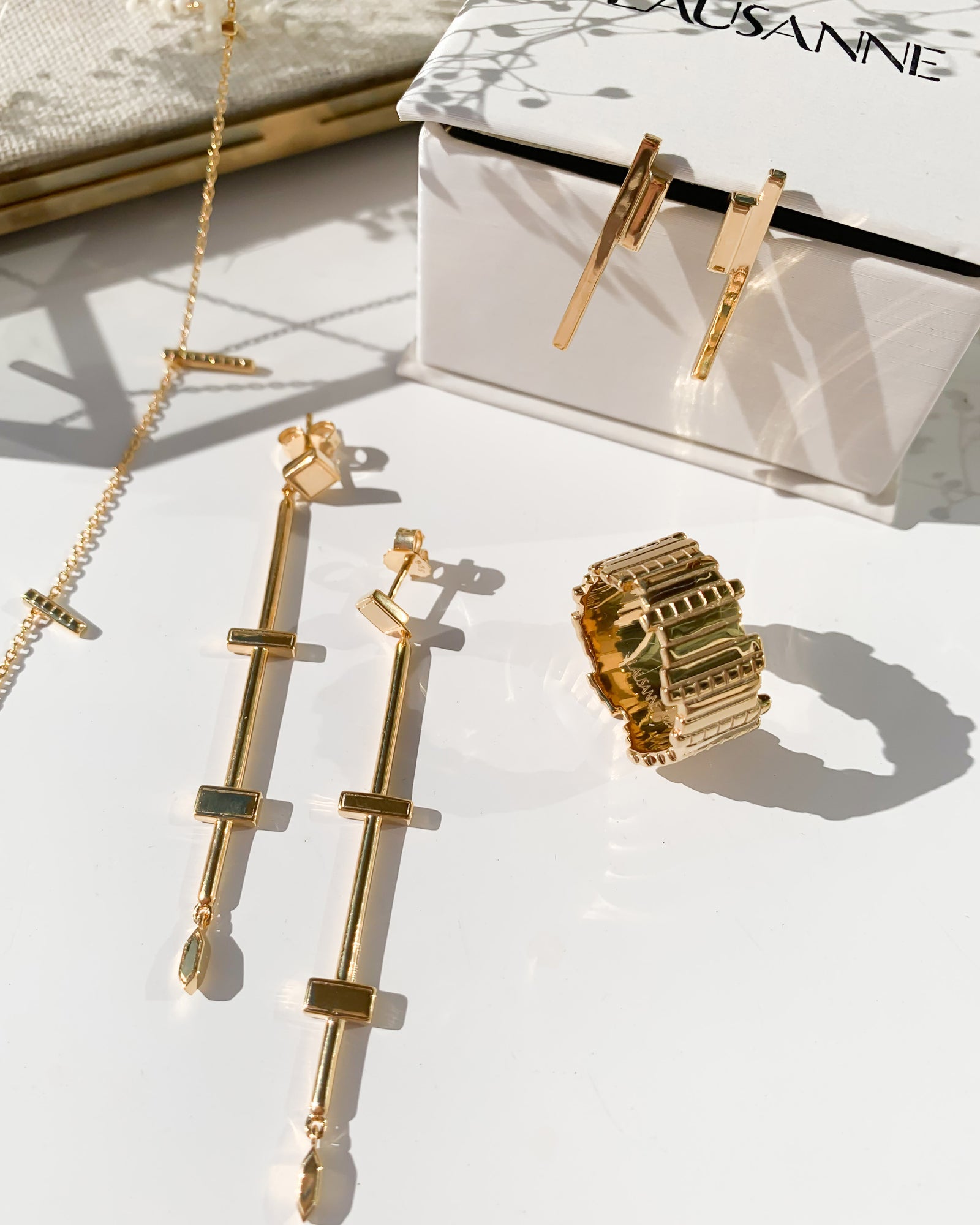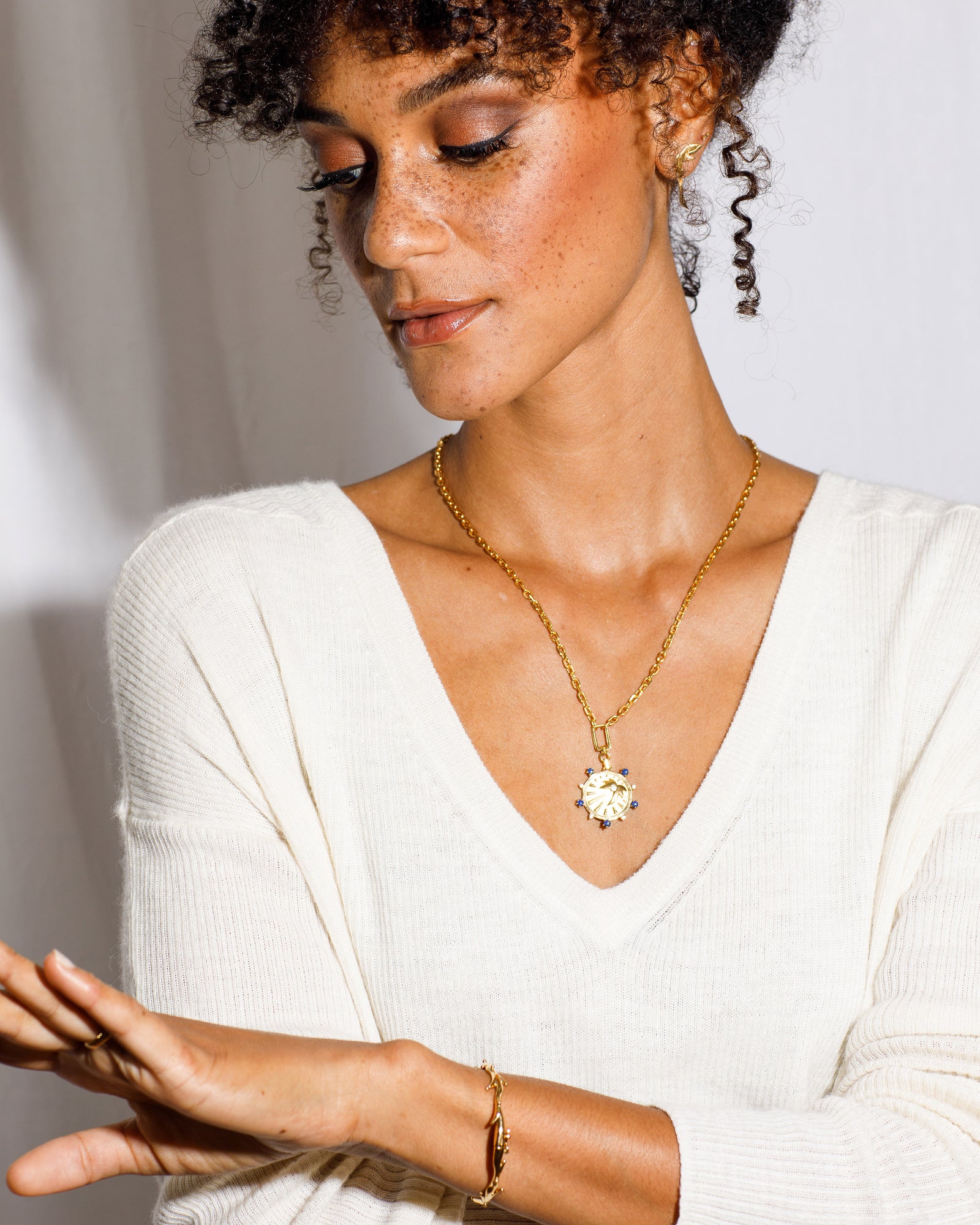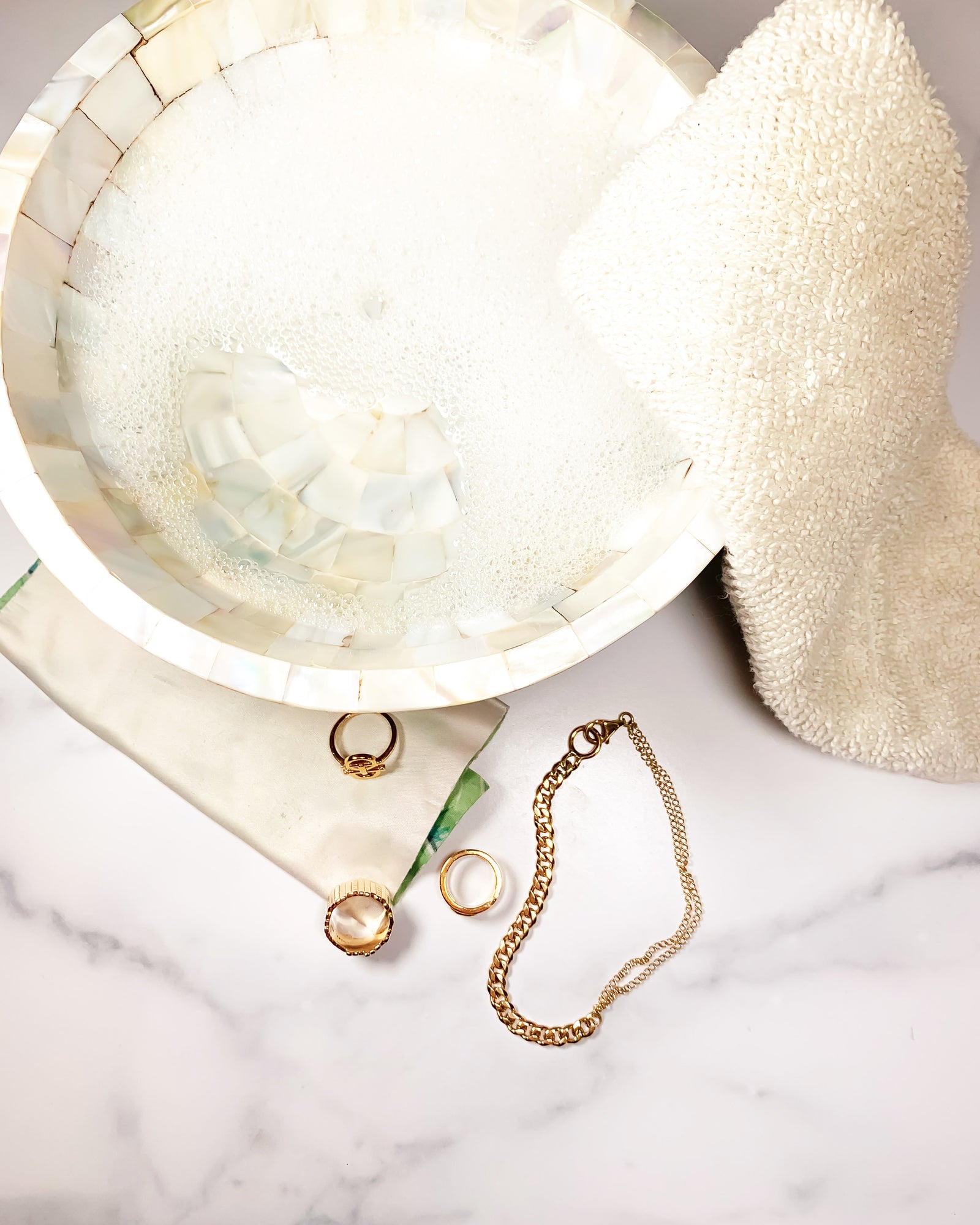What Is Gold Vermeil?
Vermeil, (pronounced "ver-may") is the highest quality of gold plated jewelry. You can think of it as the business class of golds. It may not be first (that would be solid gold) but it is light years better than your average gold plated jewelry and definitely where we’d rather be sitting.
There are several interesting things to note about vermeil jewelry, (whether you see the term gold vermeil or just vermeil it’s all referring to the same thing). Vermeil is a thick layer of gold bonded over a precious base of sterling silver. It is the only kind of plating that has to be regulated and measured to legally use the term "vermeil."
These requirements mandate that it has to be a gold layer minimum of 2.5 microns thick, has to be a karat weight of 10 or above, and can only be bonded to a base of sterling silver (as opposed to cheaper metals like brass). Because these regulations are in place, you can rest assured with the thickness of gold and high quality jewelry you're purchasing.

Gold Vermeil Vs. Gold Plating
In contrast, anything described simply as plated or gold plated can be hard to know for sure what quality you’re getting as there are no set regulations or requirements as there are with gold vermeil pieces. (Kudos to the brands that do call out their base metals on gold-plated pieces!)
The most commonly used plating practice is something known in the jewelry industry as “flash” plating. This type of plated jewelry is typically applied to a base metal of brass. And while there’s nothing wrong with this method of plating, it just doesn’t last as long because it can be a very thin layer of gold (often less than 1 micron). Additionally, once that gold wears down and the base of brass is exposed it’s not going to be the shiny gold tone of your desired gold jewelry, or worse yet, can develop an unsightly grey film due to oxidation reactions. Brass also can be the culprit for an allergic reaction for some (yes, we're talking about the dreaded green skin markings.)
With gold vermeil (in our case 14k gold-18k gold vermeil) not only does the gold content last much longer because the thickness of the gold is much higher, but in the case that it does wear down or get scratched over time; the big difference of having a pure silver base metal underneath is key. And because it's real gold over sterling silver, it's irritant-free and ideal for sensitive skin. Kiss your worries of green skin goodbye and say hello to beautiful affordable luxury.

Gold Vermeil Vs. Gold Filled Jewelry
We know... there’s a lot of terminology out there. We’re here to help! Gold Filled (also called gold fill) is created by a mechanical process of pressure bonding layers of gold over brass. Think of a panini press grilling a sandwich. The bread on the outside is gold, and the fixings in-between are the base material brass. With gold-filled pieces, the gold percentage is required to be 5% of the total. Gold-filled can be great in that, believe it or not, 5% is a much thicker layer than flash plated styles and typically is very long-lasting.
The downside again is that the base standard material is brass (although more heavily shielded) can still potentially cause skin irritations and or develop oxidation films and reactions if exposed. Also, because this type of bonding process has to be mechanically fabricated in sheet or wire form there are limitations with how you can create jewelry with it. Meaning it can't be molded and cast which is how more sculptural styles are typically crafted. This can also mean, depending on the style, that there can be cut or exposed edges where the brass area is visible.
As a general rule, gold-filled chains are usually fine and can be of great value as links are closed and there’s no exposure of brass core edges. Just be careful to check how any pendants are made if you’re looking for a longer-lasting style.

How durable is gold vermeil?
Like most things in life, the better you care for your gold vermeil jewelry, the longer it's going to last and hold up its golden shine for you. And because everyone's amount of daily wear and tear is going to be different it's hard to put a timeline on it.
I personally wear my gold vermeil jewelry every day and follow general best practices but am not perfect.
For example, I always remove it while showering, cleaning, swimming, using lotions and products, and most of the time while working out. But I do keep my rings on while simply washing my hands and sometimes cooking. And I have pieces 5-10 years old that still look absolutely beautiful and or only have a small amount of silver showing through.
An important key to keeping your jewelry collection at its best (no matter the material) is to always wipe off any residue and keep things stored in an airtight place. For all of our care tips take a look through our best practices guide here.
One of the things I love most about gold vermeil quality is that the base is sterling silver. So let's look at the worst-case scenario being that you're a wild and free individual who never takes your jewelry off and exposes it to all the chemicals. That means that the gold likely will wear down and expose the silver beneath it over time.
BUT,,, it's silver! That's still a beautiful precious metal and more likely than not, your piece will simply take on the look of a lighter white gold rather than a dark bronze hue that can happen with typical plated jewel.
In our book that’s a win! Beautiful, uniquely you jewelry that lasts and keeps up with your everyday wear without the fine jewelry price tag.
Can gold vermeil tarnish?
In short, yes. But so can what we think of as solid or pure gold. All gold used in jewelry is actually a metal alloy (meaning a mixture) of small percentages of other metals that help to add hardness. True solid gold is a pretty soft metal and not able to hold well as in its pure form. So, any gold under 24k essentially can tarnish, but it does not tarnish easily.
The good news? It's SUPER easy to remove. Literally just gently rub your piece of jewelry with a soft cloth, (I use a sunglass cloth) and it'll come right off. Even better, if you keep your jewelry stored in an air-tight container you'll likely never need to do this at all.
Now the main difference between slight tarnish that you may see on gold or gold vermeil and tarnish that can occur on plated jewelry is the appearance of the tarnish itself and the remove-ability. The real gold tarnish will be a slight darkening or spotting easily wiped away.
The tarnish that brass (base metal of plated jewelry) can form is a grey film-like substance. Unfortunately, the only way to remove this is to buff it off, which in the case of plated jewelry also would remove the surface gold too.
How to identify if your jewelry is gold vermeil?
Now that you know the differences between the types of gold-plated jewelry out there, how do you identify something while shopping or something you already own as vermeil?
The easiest way to identify the quality of your jewelry is to look for the engraving on it indicating the base metal. For vermeil jewelry, there will be a "925" engraved on it (typically found with the logo on a back or interior side of the jewelry piece.) 925 indicates the purity of the base metal which is sterling silver. So even though there's that thick layer of gold as well, the law requires that the highest percentage of metal used is indicated, which for vermeil is the sterling silver base metal.
If you find 9k, 10k, 14k, 18k, or 24k, that means you have a solid gold piece.
If you find NO engraving that likely means that base metal is brass or an alloy of mixed base metals.
Now technically... a metal quality engraving is not required for the U.S. as it is in most other countries. BUT, if a jewelry brand is paying for high-quality precious metals, I don't know why they wouldn't want to show that. So in my opinion, it's pretty safe to assume that no engraving means a low-quality base.
When in doubt (because honestly, these engravings can be tiny and hard to find) just reach out to the brand and ask. Any reputable jeweler should be more than happy to share with you the materials that they use in general and in their gold-plated collection.
Here at Shop Lausanne, we’re sticking to precious metals only, using solid sterling silver and Gold Vermeil.
We believe in investing in meaningful jewelry that will not only last quality-wise but also style-wise. So, you can enjoy wearing them for years to come.
I hope this helped break things down for you! If you’d like more helpful info like this, join our newsletter below for the occasional update.
Questions? Let me know at hello@shoplausanne.com or say hello on Instagram @lausannejewlery.





Leave a comment (all fields required)